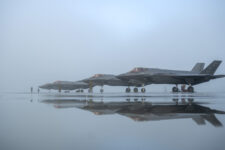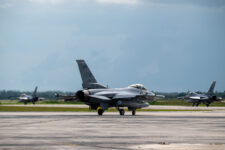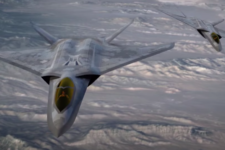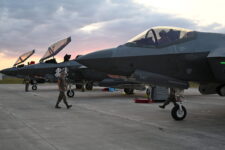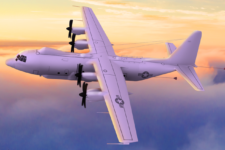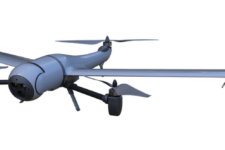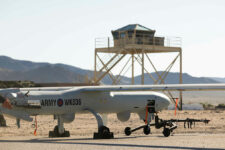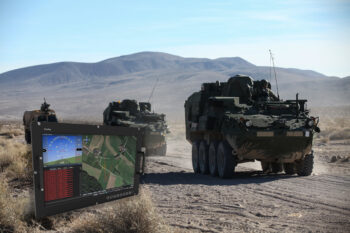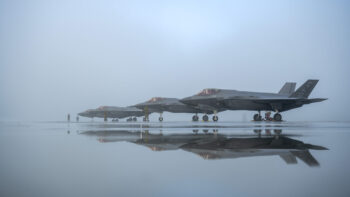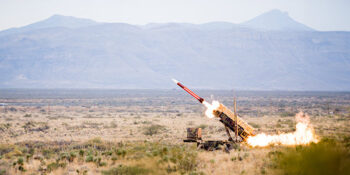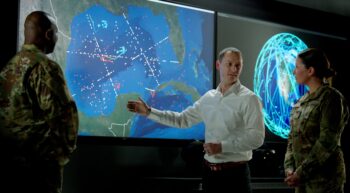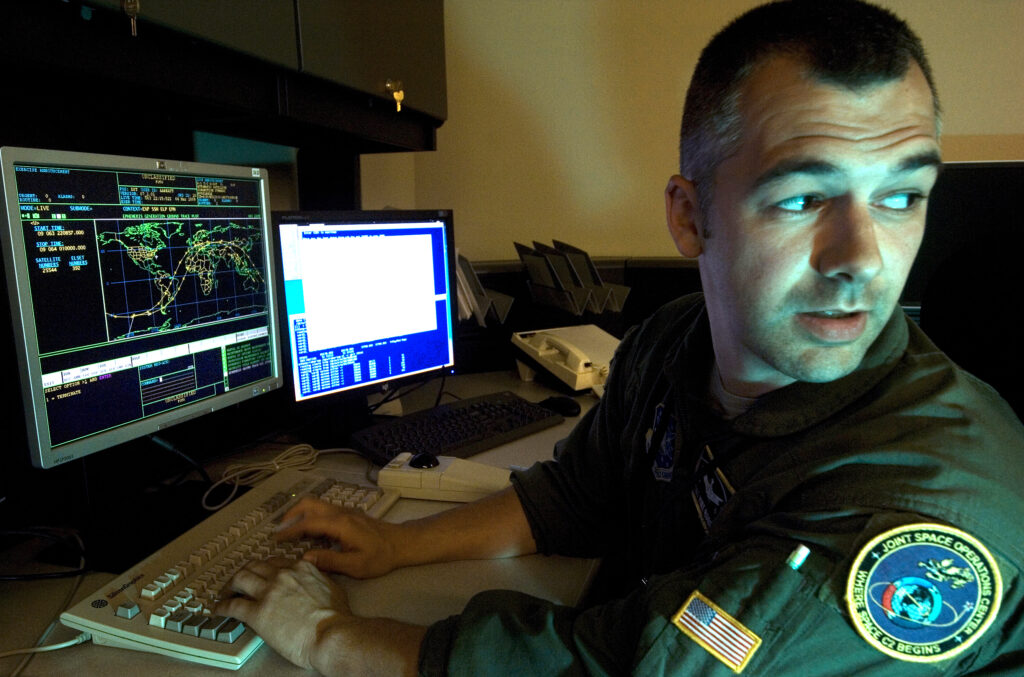
Joint Space Operations Center, Vandenberg Air Force Base, California
WASHINGTON: In 2018, Congress is likely to override the Air Force’s objections and carve out some kind of Space Corps. What kind of Space Corps is the question.
Both sides of this debate agree that space will be a battlefield in future war. Instead of leaving US satellites unmolested to support operations on earth, future adversaries will try to jam them, hack them or destroy them. Senior US officials increasingly speak of pursuing “offensive” capabilities in space, to the consternation of arms control types. Meanwhile China actually shot down a satellite in a 2007 test, and both China and Russia have tested anti-satellite systems since.

Debris from China’s 2007 anti-satellite test endangered multiple orbis.
As a result, powerful legislators think the Air Force is falling behind foreign space programs because it subordinates space to traditional manned aircraft. Their solution is separation: a distinct institution that will specialize in space.
Meanwhile, military leaders are focused on integration: bringing together not only the Air Force’s three domains of space, cyber, and air, but even the Army-led land domain and the Navy-led sea domain. (Some argue the electromagnetic spectrum should be a sixth domain). Operations in the four other domains already depend on space for overhead reconnaissance, satellite communications, and GPS, while space operations depend on ground-based control stations. Experimental wargames show that the military calls a multi-domain approach would require even closer coordination.
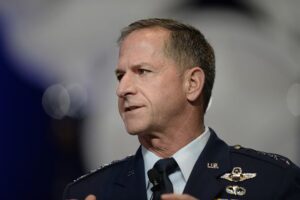
Gen. David Goldfein
“If you’re saying the word ‘separate’ and ‘space’ in the same sentence, you’re moving in the wrong direction,” said Air Force Chief of Staff, Gen. David Goldfein, who’s launched an initiative called Multi-Domain Command & Control. “The secretary and I are focused how do we integrate space.
“Every mission we perform in the United States military is dependent on space,” Goldfein said. “Now is not the time to build seams and segregate or separate. Now’s the time to further integrate.”
But the chief advocate for a Space Corps had no patience with Goldfein and company’s reforms. “The Air Force leadership would have us trust them – I don’t think so. They just need a few more years to rearrange the deck chairs – I don’t think so,” said Rep. Mike Rogers, chairman of the House Strategic Forces subcommittee. “This is the same Air Force that got us into the situation where the Russians and the Chinese are near-peers to us in space.”
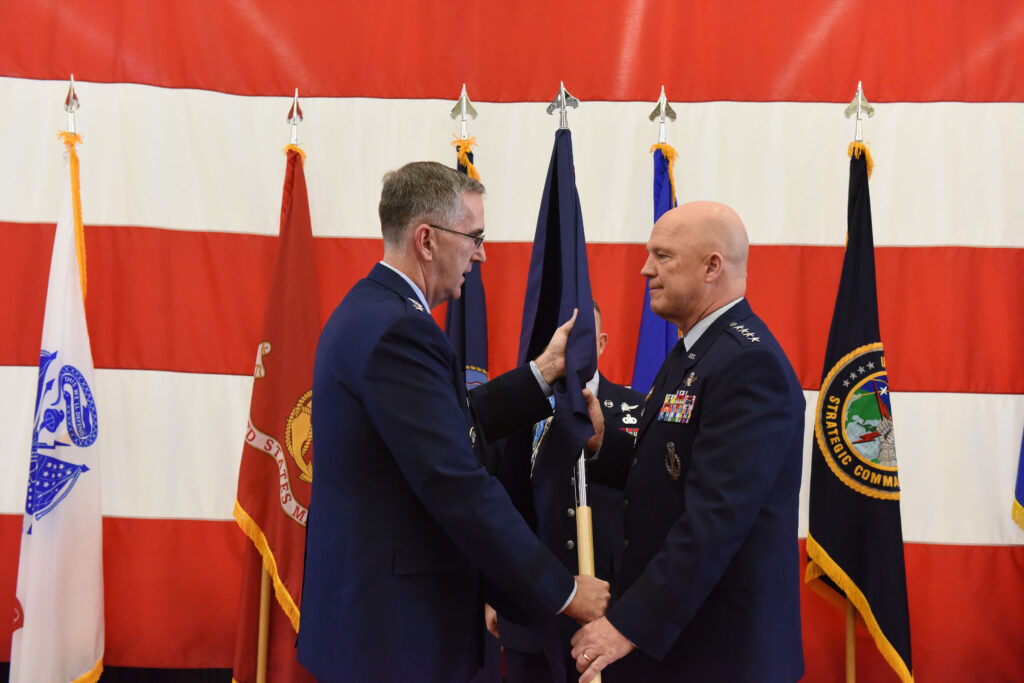
Strategic Forces Command chief Gen. John Hyten (left) formally inducts Air Force Space Command’s Gen. Jay Raymond (right) with new operational responsibilities.
Never Enough
Goldfein and other Air Force leaders spent much of 2017 fighting a desperate rearguard battle to stop the creation of a Space Corps. In the end, they sort of won, but barely and perhaps pyrrhically. The Chief of Staff actually began the year with a bid to further cement the Air Force’s lead in military space (the other services have relatively small space elements of their own) but was soon playing defense against accusations that the service was not doing enough.

First meeting of the reborn National Space Council
One of the service’s central reforms, creating a beefed-up space team on the Air Force’s Pentagon staff (staff section A11), was actually undone by Congress in the final National Defense Authorization Act for fiscal 2018. The NDAA also reorganized Air Force Space Command, giving the AFSPC commander a six-year tenure to increase his or her independence from Air Force leadership, deliberately imitating the Naval Reactors organization in the Navy. And the NDAA ordered the Pentagon to review who should have oversight over space acquisition DoD-wide, currently an Air Force responsibility.
Other Air Force efforts survived. It got White House support to revive the National Space Council as a policy forum. It elevated the AFSPC commander to four stars with new operational responsibilities, reporting to the joint (all-service) Strategic Command. At the same time, STRATCOM chief Gen. Jon Hyten, the service’s most prominent space officer, streamlined his joint command’s structure to focus on just four key areas: space, air (i.e. nuclear bombers and ICBMs), maritime (i.e. nuclear missile submarines), and missile defense (which, unlike the others, doesn’t line up with any of the five official domains).
Hyten also strengthened STRATCOM’s experimental command post for war in space, renaming it the National Space Defense Center. That center, incidentally, is now one of the models the Air Force is studying for its future Multi-Domain Command & Control system.
But at the same April Space Symposium where Hyten announced the NSDC, Rep. Rogers also made his first big speech calling for an independent Space Force. (Only later did he tone down the concept to a “Space Corps” tied to the Air Force as the Marine Corps is to the Navy). Whatever reforms Hyten, Goldfein, and other Air Force leaders have made, it hasn’t been enough to satisfy the Hill. That probably won’t change in 2018.
Colin Clark also contributed to this article.
Pentagon awards Lockheed $11.8 billion undefinitized F-35 production contract
The Pentagon aims to finalize the contract for production lot 18 by the spring, though a similar award for lot 19 is not planned to follow until the fiscal 2025 budget is approved, according to the F-35 Joint Program Office.
